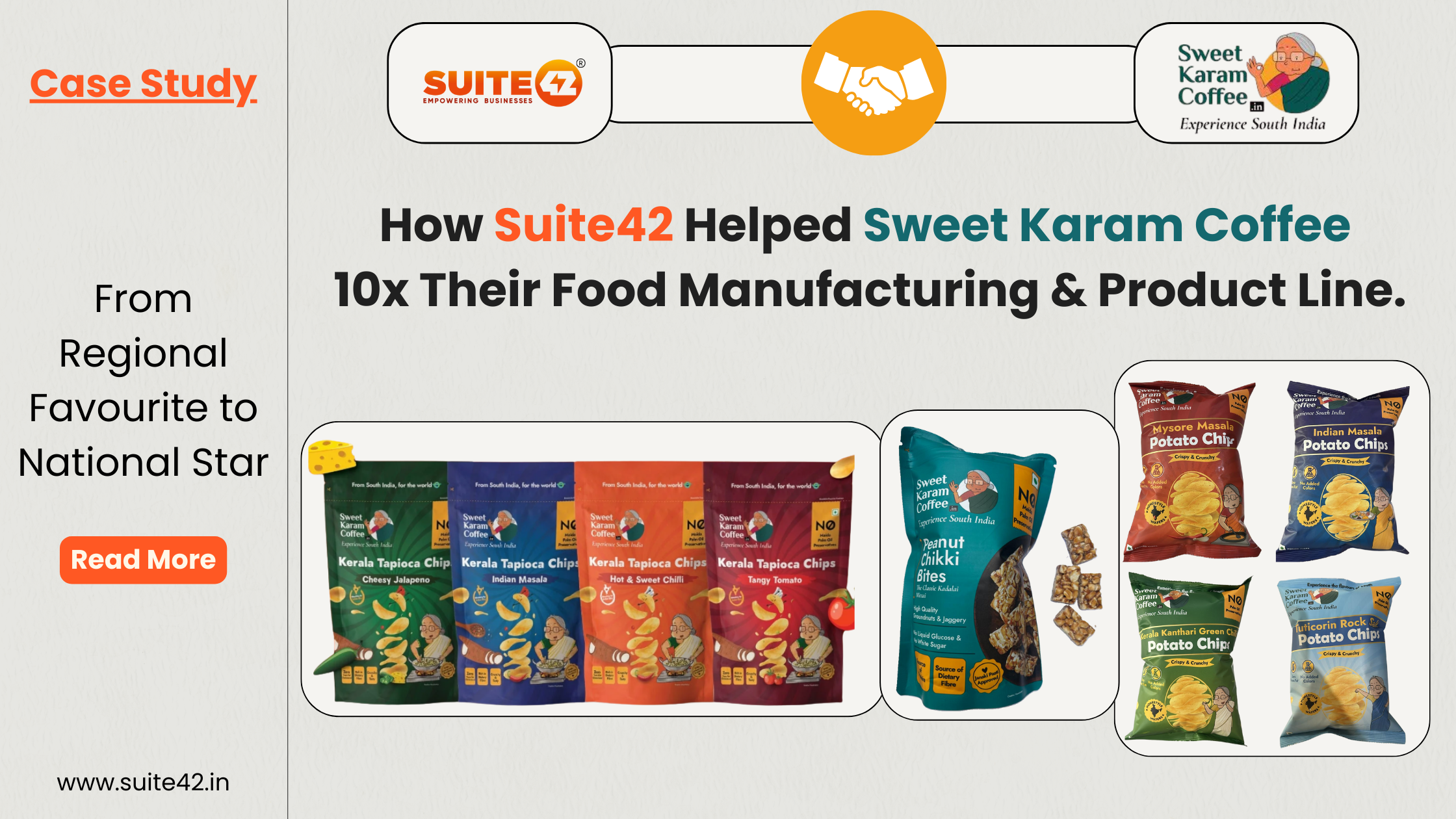
Freeze-Dried food New Product Development: Steps and Strategies for Success
Introduction
The freeze-dried food landscape has undergone a substantial evolution in recent years, revolutionizing how we perceive food preservation. Within this dynamic market, the role of new product development stands as a cornerstone, propelling innovation and shaping consumer choices. Understanding its pivotal significance is crucial to harnessing the potential of freeze-dried foods effectively.
New product development acts as the lifeblood of this industry, driving innovation and responding to evolving consumer preferences. It’s the strategic linchpin that not only sustains market relevance but also fosters growth by introducing novel freeze-dried food variants.
Understanding Freeze-Drying Technology
Freeze-drying, an intriguing process within new product development, stands as an ingenious method for preserving food while retaining its original properties. This technology, often utilized for freeze dried fruits and freeze dried vegetables, operates on the principle of sublimation. Understanding the science behind freeze-drying unveils a meticulous dance of phases and principles.
The process initiates by freezing the product, then subjecting it to reduced pressure, causing the frozen water within to transform directly into vapor—this sublimation removes moisture, leaving behind the essence of the food in a dehydrated state. This intricate procedure is pivotal in creating top-notch freeze dried foods and freeze dried snacks, ensuring their extended shelf life without compromising quality.
Exploring the freeze dried products domain reveals an intersection of culinary art and scientific precision. These items, often associated with innovative freeze dried food companies, undergo a series of steps in the new product development process. This encompasses meticulous planning, research, and execution phases to yield these delectable, shelf-stable offerings.
The core of this process lies in the seamless coordination of product development process steps—from concept inception to final packaging—ensuring that the essence, taste, and nutrients of the original food product remain intact throughout the journey of freeze-drying.
Initial Steps in Product Development: Ideation, Market Research and Analysis
The ideation phase in new product development marks the genesis of innovation, particularly in the realm of freeze-dried goods such as freeze dried fruits and freeze dried vegetables. Here, concepts bloom, cultivated through a creative symphony blending imagination and market insight.
Generating groundbreaking freeze dried product concepts involves harnessing inventive prowess, envisioning novel ways to encapsulate flavor and nutrition. Simultaneously, meticulous market research and analysis form the bedrock, unraveling consumer preferences and market gaps crucial for successful product conceptualization.
This intricate dance between imagination and practicality ensures that the envisioned freeze dried foods align with market demands and technological feasibility. Freeze dried food companies, champions of this process, meticulously navigate these initial product development process steps to forge innovations that resonate with consumers’ desires and bridge industry gaps.


Product Conceptualization and Design
In the realm of new product development, the stage of product conceptualization and design is akin to an artist’s canvas, where ideas materialize into tangible concepts, especially in the world of freeze-dried offerings like freeze dried fruits and freeze dried vegetables. Here, innovation intertwines with practicality.
Translating ideas into concepts demands an intricate understanding of consumer needs and technological possibilities. Designing exceptional freeze dried products requires an alchemy that merges culinary artistry with scientific feasibility. It’s about crafting products that not only tantalize taste buds but also align with market demands and technical constraints.
Simultaneously, the critical aspect involves evaluating the viability and feasibility of concepts. This process sifts through the brilliance of ideas to unearth the gems that hold the promise of market success. Freeze dried food companies navigate these crucial product development process steps meticulously, ensuring that every conceptualized product possesses the potential for both innovation and market success.
Prototyping and Development Phase
In the landscape of new product development, the prototyping and development phase serves as the forge where concepts shape into tangible entities, especially in the domain of freeze-dried marvels like freeze dried fruits and freeze dried vegetables. This phase marks the transition from abstract ideas to concrete products.
Prototyping freeze-dried products involves a fusion of culinary innovation and scientific precision. It’s the phase where theoretical possibilities meet practical implementation, evolving from a mere freeze dried foods concept into a feasible and refined product. Here, the alchemy of freeze-drying unfolds, capturing the essence of freshness and taste in every morsel.
From the embryonic stage of a product’s conception to its reality, this phase involves refinement and enhancement. It’s a meticulous process of fine-tuning, ensuring that the freeze dried products not only retain their nutritional value but also deliver on taste, texture, and overall quality—a testament to the commitment of freeze dried food companies to excellence in the new product development process.
Quality Assurance and Compliance
Ensuring top-tier standards in freeze-dried product development is the cornerstone of creating exceptional offerings in the world of new food products. Quality assurance and compliance encompass a meticulous process that traverses every stage of new product development.
The journey begins by meticulously defining the specifications and standards for freeze dried fruits, vegetables, and other related freeze-dried products. Rigorous testing, adherence to stringent quality protocols, and consistent evaluation are pivotal in this phase.
Navigating the landscape of regulatory compliance and safety requirements demands attention to detail. Freeze dried food companies must harmonize their innovations with an array of safety regulations, ensuring the integrity of their offerings.
Each stage in the product development process embodies a commitment to upholding unparalleled quality standards, thus culminating in freeze-dried foods that not only tantalize the taste buds but also meet safety and regulatory expectations, ensuring consumer trust and satisfaction.


Packaging Strategies for Freeze-Dried Products
The importance of packaging in the success of freeze-dried products cannot be overstated. It’s the silent ambassador that speaks volumes about the brand’s identity and preserves the essence of freeze dried fruits and vegetables. Effective packaging strategies serve a dual purpose: they ensure the preservation of quality and elevate the product’s visual appeal.
Designing packaging tailored for freeze dried foods demands a fusion of creativity and functionality. The emphasis lies not only in protection but also in conveying the essence of the product. Strategic choices in material, design, and information layout play a pivotal role in enticing consumers.
Beyond mere containment, packaging stands as a vessel for branding. It communicates the ethos of freeze dried snacks and related products, influencing consumer perception. Packaging should not just preserve; it should narrate a story and evoke the product’s essence, drawing consumers into the world of flavorful, nutritious freeze dried foods.
Testing and Iterative Improvement
Testing and iterative improvement are critical phases in the realm of new product development, especially in the domain of freeze dried products. Rigorous testing involves comprehensive sensory evaluation and quality assessment procedures.
For freeze dried fruits and vegetables, sensory evaluations encompass a multidimensional analysis, evaluating taste, texture, aroma, and appearance. These assessments validate the product’s alignment with consumer preferences and quality benchmarks.
Quality assessment extends beyond sensory aspects, delving into nutritional content, shelf-life analysis, and compliance with safety regulations. Incorporating feedback from these assessments becomes the compass for continuous enhancement. Each feedback loop drives refinements, aiming to elevate the product’s attributes, addressing any identified shortcomings in the new product development process.
This iterative approach ensures that each version surpasses its predecessor, refining freeze dried foods to achieve the pinnacle of quality and consumer satisfaction.
Article that might interest you: Revolutionizing Snacking with Freeze-Dried Fruits and Vegetables.
Production Scale-Up and Manufacturing
Production scale-up and manufacturing for freeze dried products entail a transition from concept to commercial reality. As the demand for freeze dried fruits and vegetables amplifies, scaling up production introduces inherent challenges and necessitates proactive solutions.
The shift toward mass production encounters obstacles such as ensuring consistency in quality across larger batches, optimizing production efficiency without compromising on freeze dried foods’ integrity, and managing increased complexities in new food products development.
Collaborating with proficient manufacturing partners becomes pivotal. These partnerships provide access to specialized facilities and expertise, mitigating hurdles in the product development process steps. Together, these collaborations address challenges by integrating innovative technologies and streamlining processes to maintain the quality and scalability essential for the freeze dried food companies.
Successful production scale-up requires a harmonious blend of precision, innovation, and collaboration, ensuring a seamless transition from ideation to widespread availability.
Marketing Strategies for New Freeze-Dried Products
Crafting marketing strategies for new freeze-dried products demands meticulous planning and inventive approaches. Effective launch tactics and campaigns are pivotal in positioning freeze dried fruits and vegetables within the market.
Developing compelling marketing plans requires understanding the unique selling points of freeze dried offerings. Emphasizing their nutritional value, extended shelf life, and diverse applications across foods and snacks is fundamental. Leveraging these aspects can resonate with health-conscious consumers seeking innovative, convenient options.
New product development services intertwine with strategic marketing efforts, ensuring that the essence of the product development process steps is communicated effectively. Crafting a narrative around the journey from ideation to the final freeze-dried product adds depth to marketing initiatives.
Successful freeze dried food companies recognize the significance of these strategies, employing them to convey authenticity, quality, and innovation, thus capturing the attention of a discerning consumer base.

Hyperlink to: https://www.suite42.in/contact-us-blog/
Conclusion
In conclusion, the journey of freeze-dried foods development hinges on meticulous planning, innovative strategies, and a keen focus on quality. From ideation to execution, Suite42 ensures excellence in new product development through its commitment to innovation.
The essence of successful freeze dried fruits and vegetables lies in their quality, nutritional value, and extended shelf life. Suite42’s dedication to the new food products development process steps reflects in its pursuit of unparalleled excellence.
This commitment is exemplified through rigorous adherence to the product development process steps and the deployment of cutting-edge techniques, ensuring that each freeze dried product meets the highest standards of quality and innovation.







Leave a Reply